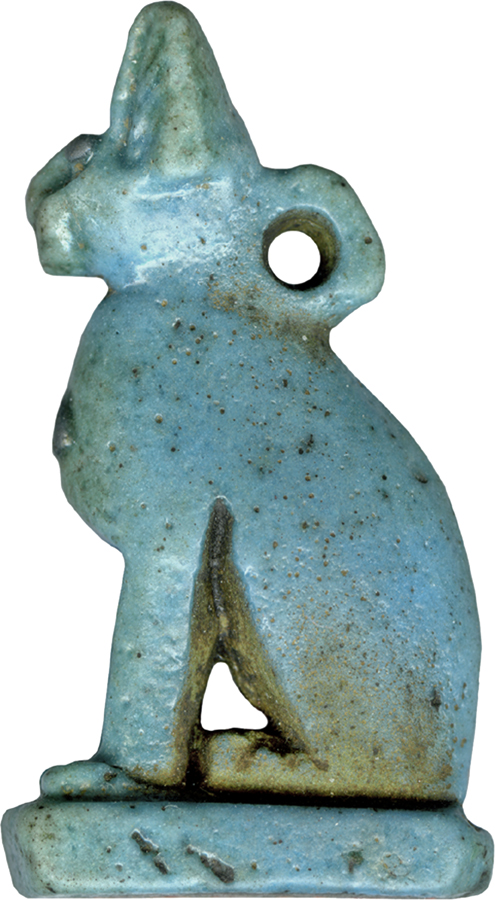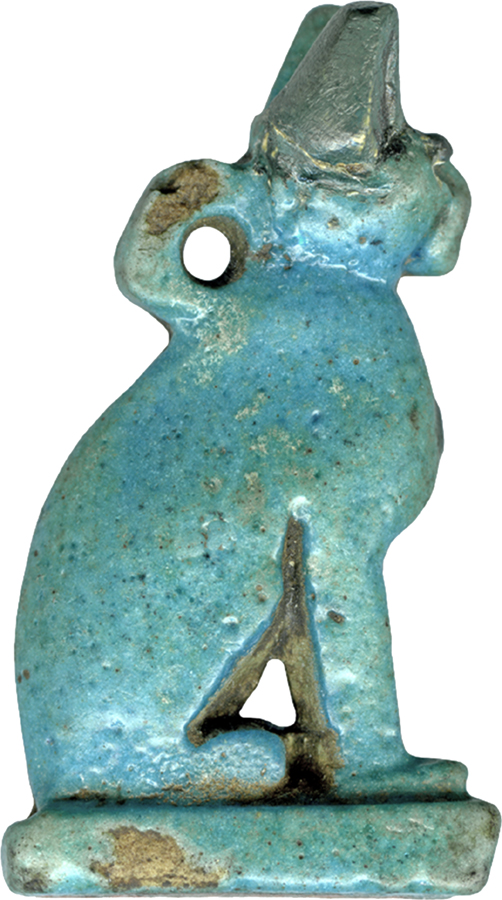Cat
(Ancient Egypt and Nubia )
Representations of cats are well-known in Ancient Egypt from the 2nd millennium BCE. The onomatopoetic Egyptian name was "miu" (mjw) for the male, and "mit" (mjjt) for the female cat. Egypt's economic base was agriculture and therefore rodent- and snake-hunting felines were very much appreciated. In terms of religious beliefs the male cat was connected to the sun-god, and the female cat to Bastet. Particularly in the Late Period and Ptolemaic period, representations of the goddess as well as cats and cats with kittens became very popular to symbolize fertility and renewal.
Amulets worn in daily life could also offer powerful protection in the afterlife. Women wore cat amulets to place themselves under the patronage of Bastet, goddess of fertility and joy. The cat, noted for its fertility, was the deity's sacred animal. This amulet presents an upright seated cat with an oval ornament in the middle of her chest. The ears are very large in comparison to the head, and the eyes protrude. The amulet has a rectangular base and a loop behind the cat's neck.
Provenance
Provenance (from the French provenir, 'to come from/forth') is the chronology of the ownership, custody, or location of a historical object.
Dikran Kelekian, Paris and New York [date and mode of acquisition unknown]; Henry Walters, Baltimore [date of acquisition unknown], by purchase; Walters Art Museum, 1931, by bequest.
Conservation
| Date | Description | Narrative |
|---|---|---|
| 7/23/1959 | Treatment | cleaned; repaired |
| 4/20/1977 | Treatment | cleaned |
| 7/30/1998 | Examination | examined for condition |
Geographies
Egypt (Place of Origin)
Measurements
H: 1 7/16 x W: 5/16 x D: 3/4 in. (3.7 x 0.85 x 1.85 cm)
Credit Line
Acquired by Henry Walters, by 1931
Location in Museum
Accession Number
In libraries, galleries, museums, and archives, an accession number is a unique identifier assigned to each object in the collection.
In libraries, galleries, museums, and archives, an accession number is a unique identifier assigned to each object in the collection.
48.1563






